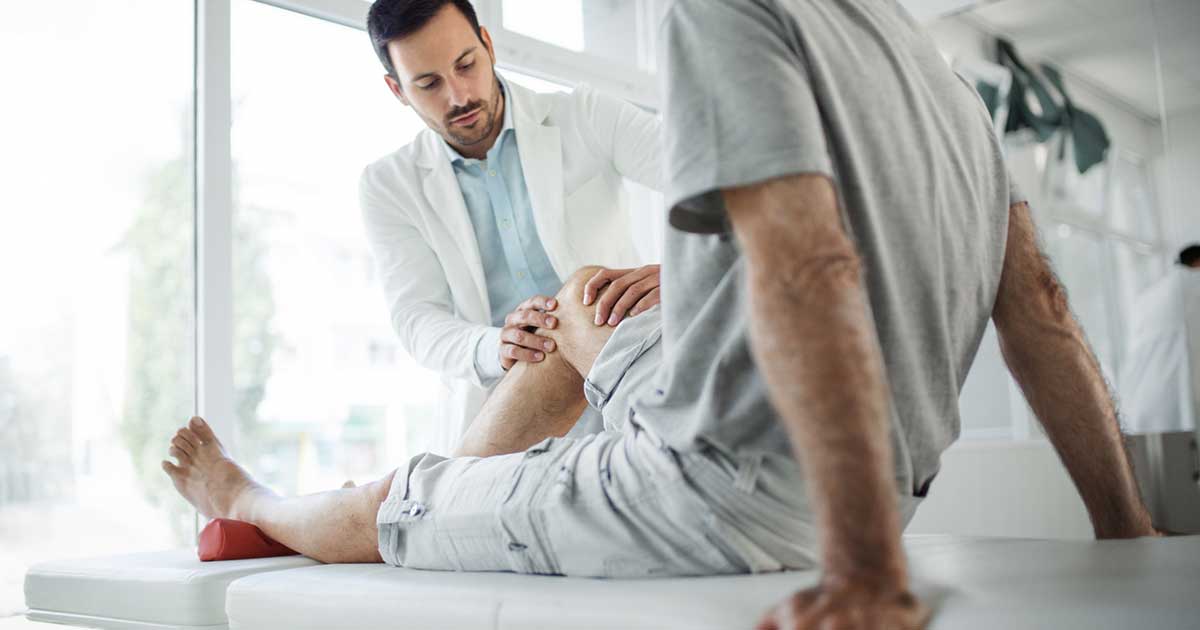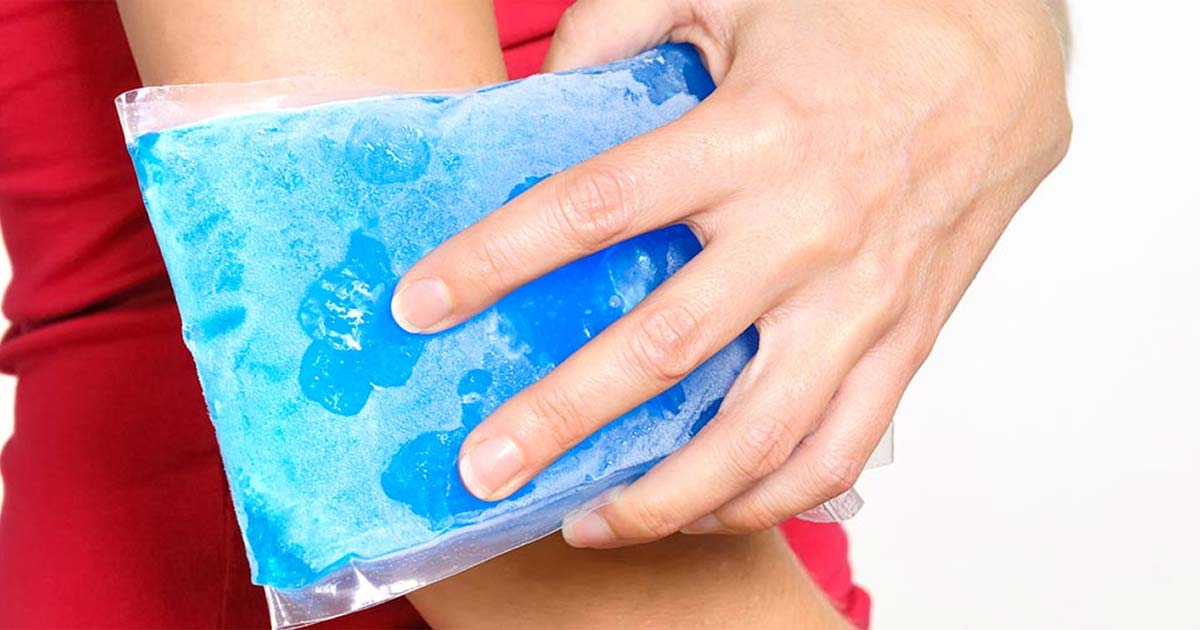Injections for Knee Pain: Could They Help You?
Advice to improve your movement, fitness, and overall health from the world's #1 in orthopedics.
Knee pain is one of the most common physical complaints for adults, affecting roughly one in four Americans over age 60. Although surgery may be required for the most severe cases, many people can get relief from a less invasive procedure: joint injections.

The how and why of joint injections—what a doctor will give a patient and where—depends on the cause of the discomfort, says Anuj Malhotra, MD, Director of the Division of Pain Management at HSS and a specialist in pain medicine. Inflammation in the joint is the most common reason, whether it's the result of an injury or, more often, arthritis and the bone-on-bone contact it causes.
Other causes of knee pain:
- Inflammation of the muscles and tendons that support the knee can cause pain in and around the joint. Most of this “non-true” knee pain involves problems with the patellar tendon, which connects to the bottom of the thigh muscle and allows the joint to flex forward and backward.
- Beneath the patella, or kneecap, sits a pad of fat that can become pinched during movement.
- And the bursa, sacs of fluid that cushion the joint, can become irritated and swell, leading to pain.
In all of these cases, if rest and use of oral painkillers like nonsteroidal anti-inflammatory drugs (NSAIDs, such as ibuprofen) or acetaminophen (Tylenol) fail to ease the discomfort, your doctor may recommend a joint injection.
Steroid Joint Injections
The most common injection is a mixture of a steroid, such as hydrocortisone, to soothe inflammation and a local anesthetic, such as lidocaine or bupivacaine, to numb the nerves in the area. “You can usually find the correct spot simply by feeling the knee, but the injection can also be done with ultrasound guidance to increase accuracy and also to improve patient comfort,” says Dr. Malhotra. Your doctor may also use fluoroscopy—a form of real-time X-ray—to make sure the medication is spreading throughout the joint as desired.
The anesthetic serves two purposes: to immediately block your pain and to signal to the doctor that your knee itself was the cause of the discomfort, as opposed to the hips or even the back. “While the interior of the knee is numbed, if the pain is more or less gone, it’s clear that the pain is coming from the knee,” Dr. Malhotra says.
The numbing affect wears off after a few hours to a few days, which gives the steroid time to take effect. “The steroid will gradually decrease inflammation over the course of a week or two and, depending on the issue within the knee, it will hopefully take a while before that inflammation comes back,” Dr. Malhotra says. “You can get a response that may last for several months or even be more or less permanent.”
Who Should Get Steroid Joint Injections for Knee Pain
Steroid injections are most effective for people who have had recent acute trauma to the knee (meaning an injury) that has triggered bruising and inflammation in the joint. “If you decrease the inflammation and the fluid is reabsorbed as a result of the injection, there's no reason the pain should come back unless you have the injury again,” Dr. Malhotra says.
For people whose pain is being caused by chronic problems—the loss of cartilage associated with arthritis, for example, or carrying excess weight—repeat injections may be necessary. However, corticosteroids can damage the bone and other organs, so doctors try to limit the use of the drugs to no more than about four injections per year in total.
That can be a consideration for people with arthritis, Dr. Malhotra notes. “If you have arthritis in the knee, you're probably more prone to have arthritis in other areas of your body,” he says. “One of the things your doctor has to be aware of is all of the other injections you might be getting, because if you're also getting injections for the shoulders or for the back, it can add up quickly.”
Steroid Joint Infection Safety
Steroid joint injections typically can be performed in an office setting, with the injection itself lasting about five minutes. Although the procedure is generally quite safe, infection of the joint can be a risk, precautions are taken to keep the area sterile. Ultrasound or X-rays may be used to guide the needle to the right location for the medication to be most effective.
In most cases, people can expect to go back to normal activity within a few days of the joint injection, Dr. Malhotra says. “You might feel better just from the local anesthetic numbing the joint,” he notes, so take caution on the day of the injection to be sure the improvement lasts before ramping up your activity.
If the joint injection is performed for inflammation in a tendon or the bursa of the knee, patients are advised to hold off on vigorous activity for a week or two because the steroid can temporarily weaken the knee tendons, he adds.
Although higher-impact sports like running are more likely to aggravate the underlying problem, Dr. Malhotra says he generally tells his patients to resume the activities they enjoy doing after a joint injection. “That's part of the point of the procedure itself,” he says. “If we can't get back to what we love doing with this minimally invasive approach, sometimes that might mean it's time to consider surgery.”
Other Types of Joint Injections for Knee Pain
In addition to steroids, clinicians have a few other options for joint injections to treat knee pain.
Viscosupplementation involves injections into the joint of hyaluronic acid, a gel-like substance that can bind to any remaining cartilage to create a protective barrier between the bones of the knee. “The idea is that now when the joint is working, it’s wearing away the gel instead of the underlying cartilage,” Dr. Malhotra says.
Viscosupplementation has been shown to last for at least six months, and often longer. With more than one injection, the procedure can delay the need for knee surgery by five to seven years, he says.
Hyaluronic acid comes in several forms—some of which can be administered in a single injection, others requiring multiple shots over several visits to the doctor. “The key is that it has to work for you longer than six months for it to be a worthwhile thing to continue,” Dr. Malhotra says.
Stem cell treatments and regenerative medicine may also be an option. While steroid injections target inflammation and viscosupplementation can slow the pace of damage to the knee, stem cell injections are intended to rejuvenate damaged cartilage.
“When you wear down a joint, very often you need to replace it,” Dr. Malhotra says. “But stem cells offer the hope of restoring cartilage, meaning you can not only delay surgery but put it off for good.”
The most common form of stem cell injection is called PRP, short for platelet-rich plasma. PRP uses blood taken from the patient and spun in a centrifuge to obtain a concentrated dose of platelets (cells that help the blood clot) and stem cells, which are special cells that can become virtually any type of tissue in the body. This mixture is then injected back into the knee, where the hope is that the cells will aid in the repair and restoration of healthy tissue.
To date, stem cell injections have been most beneficial for treating injuries to tendons, such as the Achilles’ tendon of the lower calf and the extensor tendon that acts up in people with tennis elbow, Dr. Malhotra says. The hope is that in the future, more specific subtypes of stem cells can be identified or cultivated with a higher chance to regenerate cartilage. Read here for more on regenerative medicine treatments and where the science is now.
Most people start with a steroid and local anesthetic because the treatment involves a single shot with the potential for lasting duration and efficacy. If you are getting some response but not enough relief with a steroid, or if you have a reason not to have a steroid (such as diabetes or multiple steroid injections in other areas of the body), viscosupplementation or PRP may be better options.
Updated 1/23/2024



